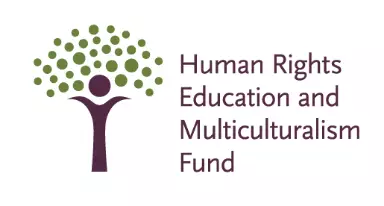
Donate to the Linda McKay-Panos Scholarship Fund

Donate to the Linda McKay-Panos Scholarship Fund
This page describes the procedure for filing a complaint with the Alberta Human Rights Commission and the Canadian Human Rights Commission.
If you have questions regarding the terms used in this section, please check out our glossary of terms (here).
The Alberta Human Rights Commission (AHRC) has a helpful website with many forms and guides to assist you in commencing or responding to a complaint. The following paragraphs provide an overview of these procedures, but we strongly recommend reviewing the Commission’s website (here) before submitting a complaint.
Complaints are made by completing the Human Rights Complaint Form or by sending a letter to the Commission (that answers all the questions on the Complaint Form). Once submitted, the Commission determines if it can accept your complaint. It will accept your complaint if:
If your complaint is accepted, the AHRC will send a copy of the complaint to the party you have named. This person is known as the respondent. AHRC will ask the respondent to provide a written response to your complaint. You will receive a copy of the respondent’s reply.
After you review this response, one of three things may happen:
In addition, you may withdraw your claim at this (or any) time.
If an investigation occurs, an AHRC investigator will collect evidence and hear from both parties regarding your complaint. He or she will then issue an Investigation Report. The report will either recommend that there is a basis to proceed, or will recommend that the complaint be dismissed. The Director will make the ultimate decision to continue or dismiss your complaint (again, if you disagree with this complaint, you can submit a written request to review this decision to the Chief of the Commission, AHRA, s. 26).
If your complaint continues, the Commission will attempt to resolve your complaint via settlement. If a reasonable settlement cannot be reached, the Director may dismiss your complaint (if it believes you refused to accept a reasonable settlement) or a Panel will be appointed to formally hear your complaint at a Tribunal.
Human rights tribunals are quasi-judicial administrative tribunals. This means that, while they are not courts, they perform their decision-making function like a court. While it follows less formalized rules than Alberta courts, a hearing before the Human Rights Tribunal can be roughly analogized to a courtroom trial. The Tribunal hears argument and evidence from all parties. After hearing the evidence, it decides whether or not the complaint has merit. If the Tribunal decides that the complaint has merit, it orders a remedy to correct the discriminatory behaviour and compensate the victim.
Until December 2021, if you disagreed with the Human Rights Tribunal’s decision, you had 30 days from receiving the decision to appeal it to the Court of Queen’s Bench (AHRA, s. 37). Section 37 was repealed in 2021. In limited circumstances, you can apply for judicial review of some decisions made in the human rights process.
As always, if you disagree with other decisions made by the Director or the Chief of the Commission (for example, if the Chief of the Commission dismissed your written request to review the Director’s decision) you do NOT have a right of appeal. Rather, you have to proceed by way of judicial review.
Judicial review is different from regular appeals. Learn more about judicial review here.
While this website provides an overview of how to launch a human rights complaint with the Canadian Human Rights Commission, we strongly recommend that you review their website before filing a complaint (here).
The Canadian Human Rights Commission (CHRC) follows a similar path to the AHRC, but it does have important differences.
Like the AHRC, after receiving a formal complaint the CHRC assesses whether it can accept the complaint. They review the complaint to determine if it fits within the CHRC’s jurisdiction and describes bona fide discrimination on a grounds and in an area protected in the Canadian Human Rights Act. The CHRC will also consider whether you exhausted all other methods for resolving your complaint before coming to them (CHRA, s. 41).
If accepted, the parties named are notified and are given a copy of the complaint and are invited to respond. After they respond, a period of voluntary mediation may then occur. If mediation is declined, unsuccessful or deemed unnecessary, the complaint can proceed to the investigation stage.
At the investigation stage, an investigator is appointed who considers your case by reviewing relevant information and evidence from all parties. Like the AHRC process, a post-investigation report is prepared that issues one of three recommendations:
The investigation report will be shared with you and the respondent. All parties are given the opportunity to make comments on the report before it is sent to members of the Commission who will decide what happens next. The Commission members will make one of three orders:
Like it’s Alberta equivalent, the Canadian Human Rights Tribunal can be roughly analogized to a courtroom trial. The panel will ask both you and the other side to produce evidence in support of your case. After hearing the evidence and arguments, the panel will decide whether or not discrimination has occurred. If it finds discrimination has indeed occurred, it will order a remedy.
The CHRC issues remedies known as corrective measures. Corrective measures might mean that the organization is ordered to:
If you disagree with a decision of the Canadian Human Rights Commission or the Canadian Human Rights Tribunal, you have no right of appeal. You may, however, apply for judicial review of the decision. Learn more about judicial review here.




2500 University Drive NW
Calgary, AB T2N 1N4
(403) 220-2505
aclrc@ucalgary.ca